Surprise! Okay, that probably wasn't very surprising. How do you surprise your readers? And how do you create the slow burn of suspense, keeping them on the edge of their seats as they tear through your story? Let's talk about how to make a story suspenseful.
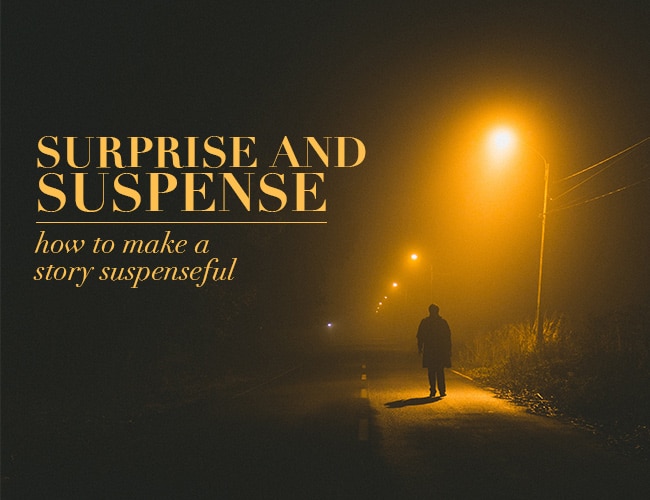
Do you like ice cream? I imagine you said yes. Me too!
When you go to the ice cream shop and stare down through the glass-top counter at all the flavors to choose from, do you sample several before making your choice? Or do you know what you like and go straight to it?
Let’s say you have two favorites that bring you the most consistent and satisfying ice cream experience. Let’s say they are a deep, dark, intense chocolate that pleasantly haunts your thoughts long after the last lick is gone, and a creamy strawberry that hits you with a surge of sweetness, waking up your taste buds as it melts over your tongue.
You may try a variety of other flavors, finding them interesting and delicious, but these two are your steady favorites and never fail to delight. Even if you decide to experiment with butter brickle or go with plain vanilla, you know that a sprinkling of strawberries or a dollop of chocolate sauce will add to your enjoyment, bringing you that flavor you really crave.
What’s Your Favorite Fiction Flavor?
Our fiction reading habits are much the same. When we’re browsing for a new book to read, we may decide to sample something new, trying out a new author or a new genre. Or we may be so attuned to one or two particular genres that we always go straight to them, feeling fairly confident that our reading experience will be a rewarding one.
But no matter how we choose our story or what we settle on reading, there are two flavors fiction writers add to their creations that consistently deliver a pleasurable reading experience: surprise and suspense.
As writers, it’s useful to:
- Be aware of the difference between the two.
- Understand the power of each to satisfy a reader’s taste buds.
- Know how to create them in our own work.
Surprise and Suspense: What's the Difference?
I’m going to liken suspense to that deep, dark, intense chocolate. It permeates your senses and triggers your pleasure centers. It’s got staying power, melting in a slow release throughout whole sections of the book and with an aftertaste that often lingers long after you’ve read the last sentence.
And surprise is like the strawberry. Bam! It smacks you broadside with a burst both tart and sweet. It’s delectable and satisfying, and then it’s gone, sometimes leaving behind a sticky mess.
Defined by the Master
Alfred Hitchcock has long been considered the master of suspense. If anyone has ever known how to make a story suspenseful, it's him. When asked to describe the difference between surprise and suspense, he came up with an interesting illustration. I’ll paraphrase it like this:
If an audience is watching a couple having dinner at a restaurant and suddenly a bomb underneath their table explodes—that’s surprise. Bang! We didn’t see it coming and it shocks or thrills us, giving us fifteen seconds, or so, of heightened emotion.
But if the audience sees the villain plant the bomb under the table and set a timer, and then sees the couple come in and sit at the table and listens to them talk while the minutes click by on the clock above their heads and the bomb ticks away beneath—that’s suspense. We bite our fingernails, wondering what will happen. Will the couple find the bomb and avoid getting blown to smithereens? The suspense approach draws out the experience, giving us long moments of escalating emotional involvement.
Let’s Go to the Movies
I thought of a few movie examples to illustrate these two techniques. SPOILER ALERT!!
For surprise, think about these:
- Star Wars: “I am your father.”
- Alien: The creature erupts from some guy’s chest in the cafeteria.
- The Sixth Sense: He was dead the whole time!
- The Untouchables: When Capone used the bat on his buddy’s head at the dinner table.
Contrast those examples with these scenes of suspense:
- Inglorious Basterds: The opening scene where the Jews are hiding beneath the floorboards while the Jew Hunter has a pleasant conversation with the farmer in the kitchen above.
- Back To The Future: Waiting for lightning to strike, will Doc make the connection in time? Will Marty get back to 1985?
- Jurassic Park: Raptors in the kitchen scene.
- The Great Escape: The POWs make their move.
Both are awesome flavors and can sometimes be paired for even greater effect, like a chocolate-covered strawberry.
The Power to Please
Before we explore how to write a suspenseful story, I want to make clear that surprise and suspense are effective ingredients in just about any genre you can name, including nonfiction. I’m not just talking about mysteries and thrillers here. Their power to please is applicable across the board.
Surprises affect a reader in many ways. A surprise can enchant, amuse, fascinate, enthrall, shock, irritate, anger, worry, or inspire. But surprise also wields a secret superpower.
In her fabulous book Wired For Story, Lisa Cron quotes neuroscience writer Jonah Lehrer when she says this: “Nothing focuses the mind like surprise.”
The Superpower of Surprise
I experienced this a day or two ago while I listened to the audiobook version of Stephen King’s Finders Keepers. I was sorting laundry, letting the dog out, and other mundane chores, and the characters in the story were having a conversation. I was paying attention, more or less, and then the narrator said, “He shot her in the head.”
I hadn’t seen it coming and I literally stopped and said—what!?! Dirty laundry dropped from my hand, the dog waited to be let back in. All my attention was on what had just happened in the story. The focusing power is real.
Think about it. Has someone ever given you one of those cans of assorted nuts that you open and a snake pops out? Or jumped out at you and screamed boo? In that moment, everything else falls away and your attention is totally focused on what just happened.
So, be aware of surprise’s superpower to focus reader attention, but don’t abuse or overuse or it will cease to be effective in your writing.
The Superpower of Suspense
The word suspense comes from the Latin word suspensus, meaning suspended, hovering, or doubtful. Suspense’s power comes from being able to hold the reader in anticipation, hovering, waiting, wondering what’s going to happen. Though it arouses many of the same emotions as surprise, it’s the slow-burn version.
Suspense engages the reader with uncertainty, eliciting our “need to know” response. We love that feeling that all is not as it seems and we savor the thrill as we follow the story.
But it goes deeper. After all, many of us like to reread our favorite books or rewatch our favorite movies. In which case, we already know what the deal is, but we still get satisfaction from the experience. How can this be?
Inside the Simulator
A well-crafted story acts as a simulator, allowing us to actually participate, experiencing the events as if they were happening to us. Numerous scientific studies have demonstrated this phenomenon, and it’s what allows us to suspend our knowledge and experience the story almost as if it were the first time all over again.
Or, if we choose, we can hold our focus on that knowledge and examine the story from the perspective of one who knows the end from the beginning, giving us a new angle on suspense for that particular story.
Puzzle It Out
We’re a puzzle-loving people. From toddlerhood, when we pushed bright-colored stars and circles through corresponding holes in a plastic box, we have been striving to make things fit, to match up, to make sense. Our brains are hard-wired to find the questions and problems in a story and work out the solution. We crave it.
As a piano teacher, I sometimes share this story with my students to illustrate a point. When Mozart was a small boy who didn’t want to get out of bed in the morning, his father would play a long scale on the piano and leave it unfinished. Young Mozart, unable to leave it hanging, would spring from his bed, run to the piano, and play the final note.
Suspense strings out a scale, a repeating pattern, and we follow along, hanging on each note, determined to see it through to the end. Our minds fill in the patterns, match up the clues, work to solve the puzzles. The power of suspense is the power to engage your reader.
How to Surprise Your Reader
To create surprise, you’ve got to hit your readers with something they didn’t see coming. But—and here’s the key—you have to set it up in advance. There must be a natural, unseen progression toward the unexpected event.
There’s an old Kenneth Branagh/Emma Thompson movie I enjoy called Dead Again. In the middle of the movie, there’s a scene that made me jump and scream the first time I saw it. (Maybe even the second time.) Nothing leaps out, no sudden gun shots, no cheap tricks. Kenneth’s character simply utters a single word and I freaked.
The beauty thing is that after he says it, I knew it was totally logical and yet unexpected enough to shock a scream out of me. This was a perfectly executed surprise.
Look at some aspect of your story and ask yourself, “How can I do the opposite of what the reader will expect?” And then make sure you thread in tiny clues leading up to the surprise, making it logical in hindsight.
How to Make a Story Suspenseful
The key to creating suspense in your work is giving your reader something to worry about, rekindling and escalating the worry as the story moves along. When you let your reader know more than the character knows, you create a particularly delicious brand of suspense known as dramatic irony.
Whether you go overt or subtle, craft the impression that all is not as it seems. Do this by:
Controlling information flow. Feed your reader. Don’t dump out what they need to know in large dollops, making it difficult to digest, and don’t withhold information. There are techniques for downplaying information you must in fairness reveal.
Creating story questions. Keep a fresh supply of story questions coming. When one gets answered, make sure a new one crops up to take its place.
Using patterns to your advantage. Set up patterns that your reader can follow, lulling them in one direction, then break the pattern. And try to find a timing and method of doing it that they won’t expect.
Combining Surprise and Suspense: Go for the Double Dip
You can pair these two flavors in two ways:
1. Use surprise to launch the reader into a tense situation, fraught with suspense.
The Fugitive: Dr. Kimble comes home to the surprise of finding his wife murdered, which throws him into a tense, drawn-out game of cat and mouse.
The 39 Steps: A very bored Richard Hannay comes home to find a mysterious stranger in his apartment and is hurled into a high-stakes adventure, dripping with suspense.
Jaws: A woman is brutally attacked by a shark, a shocking surprise which puts the whole beach community on tenterhooks.
Misery: Paul Sheldon suffers a horrible car accident, followed by a long, tense recovery aided by his biggest fan.
2. Create a tense situation, fraught with suspense, and throw your reader a curve ball.
“The Lottery,” by Shirley Jackson: An entire village gathers for the lottery drawing and all is clearly not as it seems. Right up to the shattering surprise ending.
Soylent Green: Tension grows throughout the film, keeping viewers wondering what’s going on, until the surprise reveal toward the end.
Gone Girl: The first half of the book builds the tension and suspense until Flynn pulls back the curtain about halfway through with a shocking disclosure.
Misery again: The situation is full of tension as the story draws out, then Annie brings a big surprise in the form of an axe or a sledge hammer, depending on whether you’re reading the book or watching the movie version.
Delicious and Satisfying
Chocolate and strawberry. Suspense and surprise. Perennial favorites that won’t lead you wrong.
Sprinkle, spoon, and pour them into your stories for greater satisfaction for your readers. Mmm!
Whatever genres you like to read, don’t you love surprises and savor suspense? Do you have any more tips for how to make a story suspenseful or surprising? Let us know what you think in the comments section.
PRACTICE
Consider a scene you’re getting ready to write. Can you twist it in an unexpected direction? If so, how will you weave the setup into the earlier parts of the story? OR, try adding some suspense to the scene by creating the impression that all is not as it seems, as discussed above.
If you can’t find an appropriate scene for this exercise in your own work, try using this prompt: Darlene entered the office after-hours to pick up some paperwork.
Write for fifteen minutes. When you’re finished, post your work in the comments section. And if you post, be sure to give feedback for your fellow writers!
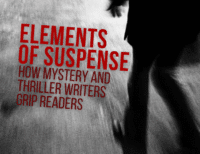
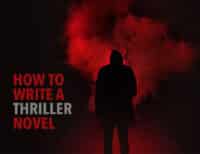
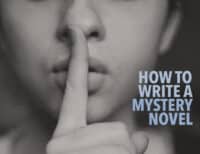
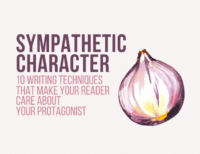



0 Comments
Trackbacks/Pingbacks